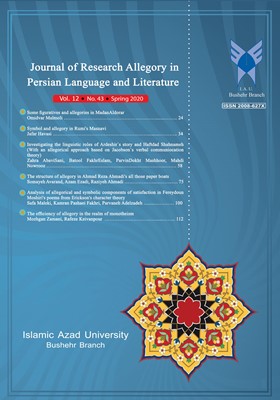-
-
List of Articles
-
Open Access Article
1 - Some figuratives and allegories in MadanAldorar
omidvar malmoli -
Open Access Article
2 - Symbol and allegory in Rumi's Masnavi
jafar havasi -
Open Access Article
3 - Investigating the linguistic roles of Ardeshir`s story and Haftdad Shahnameh (With an allegorical approach based on Jacobson`s verbal communiocation theory)
Zahra AbaviSani Batool FakhrEslam ParvinDokht Mashhoor mahdi novrooz -
Open Access Article
4 - The structure of allegory in Ahmad Reza Ahmadi's all those paper boats
somayeh avarand azam ezadi raziyeh ahmadi -
Open Access Article
5 - Analysis of allegorical and symbolic components of satisfaction in Fereydoun Moshiri's poems from Erickson's character theory
safa maleki Kamran Pashaei Fakhri parvaneh Adelzadeh -
Open Access Article
6 - The efficiency of allegory in the realm of monotheism
mozhgan zamani Rafeze Keivanpour
-
The rights to this website are owned by the Raimag Press Management System.
Copyright © 2021-2025







